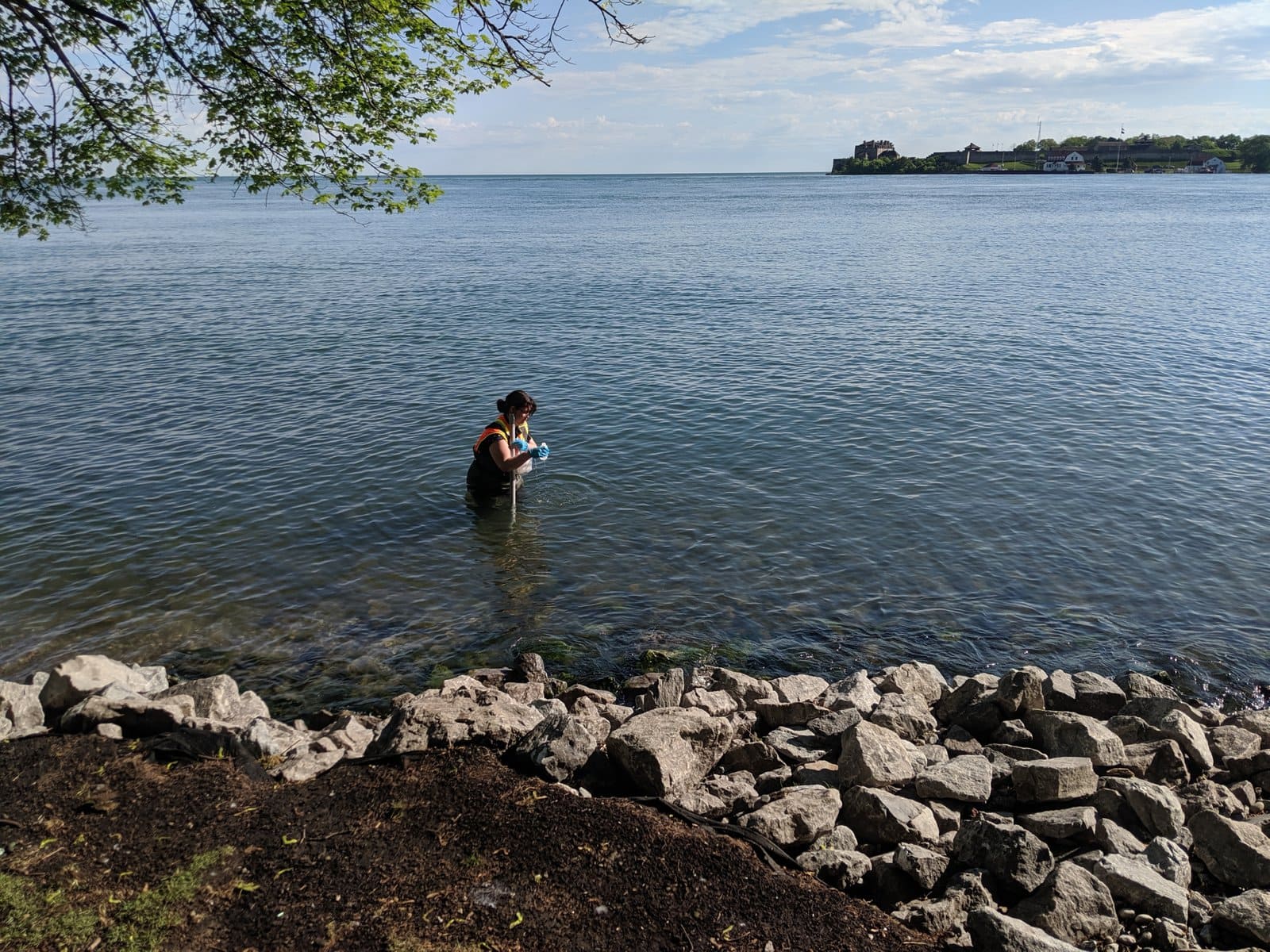If you’re looking for a way to cool off and have fun this summer, you may feel a bit better about taking a dip in the waters of the Niagara River.
After eight years of cleaning up and monitoring Queen’s Royal Beach, the water quality has increased significantly, with the province officially recognizing its improvement.
In March, the Niagara Peninsula Conservation Authority received correspondence from Environment and Climate Change Canada stating the beach’s status has now been changed from “impaired” to “not impaired.”
The conservation authority and the Town of Niagara-on-the-Lake worked together through the Niagara River Remedial Action Plan to address the river’s water quality issues, caused by human waste.
Queen’s Royal Beach is the only swimmable beach along the Niagara River.
“The river was considered to be bad or degraded because of water-quality problems,” said Natalie Green, the action plan’s project manager.
This was due to human E. coli making its way into the water from human sources such as poor sewage treatment and leaking pipes.
The Remedial Action Plan was enforced when the Great Lakes Water Quality Agreement listed the Niagara River as one of 43 original areas of concern in 1987.
The plan uses a list of 14 “impairments” to help address issues in the Niagara River related to water use.
These categories of impairments determine if an ecosystem is healthy. Each category targets a specific area that needs improvement.
Some areas include wildlife habitats, water quality and fish populations.
For the Niagara River, Green explained, the bacterial levels were not reaching the targeted levels of safety as often as they should have.
Before 2018, only 44 to 75 per cent of water testing samples came back as safe for swimming.
From 2018 to 2020, however, water quality samples met proper targets more than 80 per cent of the time, said Green.
According to data from the Niagara Region, in 2018 the beach was safe to swim 86.8 per cent of the time, 86 per cent in 2019 and 92 per cent in 2020.
“The water quality improvement at Queen’s Royal Beach is a significant accomplishment,” Marnie Cluckie, the town’s chief administrative officer, said in an email to The Lake Report.
It cost almost $1 million to improve the water quality at the beach.
The town discovered the King Street stormwater outlet, which discharges stormwater near the beach, was the main source of contamination.
Testing found human sources of E. coli in the stormwater pipe that drained into the river.
Water running off of the roads into the river should only carry stormwater from the roads and lawns, Green said.
“It shouldn’t have human bacteria because that should be going into the pipes that take the water to the water treatment plant,” she said.
After this discovery, the town began trying to fix the problem. It received funding from Environment and Climate Change Canada between 2017 to 2019 to investigate the stormwater outlet area and find the issue’s source.
Green’s assessment report on the issue, published in 2021, states there were several issues with bacterial contamination due to improper sewer connections, abandoned sewer infrastructure and poor stormwater infrastructure conditions, to name a few.
Green said the wading pool in Simcoe Park along Queen Street was a big contributor to high E. coli levels.
She said children would urinate in the pool and that water would go directly into the river.
When the town figured out this was an issue, it reconnected the pool to the water treatment plant, Green said.
“Now, all of the water from that wading pool goes to a wastewater treatment plant to get treated instead of going directly into the river,” she said.
Using provincial and government funding, the town continued water quality improvements by sampling the water three times a week, conducting an investigation into the stormwater outlet, implementing the remedial action plan and adding a bioswale at Simcoe Park.
A bioswale acts as a miniature treatment plant and catches, stores and filters stormwater.
According to Green’s report, those monitoring the bioswale between 2018 and 2020 found the system was 89 to 95 per cent effective at reducing bacteria.
The town also replaced cracked pipes and home pipes that weren’t going to the sewage treatment plant.
Green said the beach will never be 100 per cent free of bacteria and residents should still check the Niagara Region’s water quality page before swimming – especially after a storm.
However, compared to eight years ago, the water quality is significantly better, she said, which is “great news.”
“We can move ahead and start focusing on our next big Niagara River issues,” said Green.
There are four remaining “Beneficial Use Impairments” along the Canadian side of the Niagara River listed as impaired.
Green said the action plan will be working on the “Degradation of Fish & Wildlife Populations” impairment assessment next, followed by “Loss of Fish & Wildlife Habitat.”











